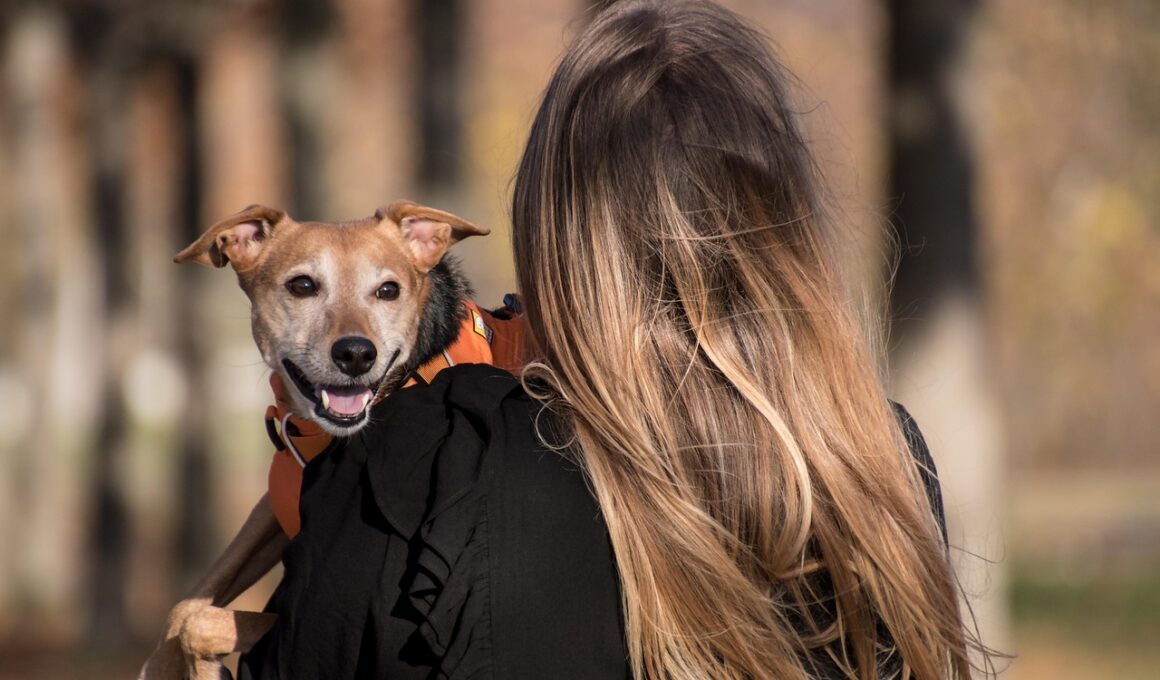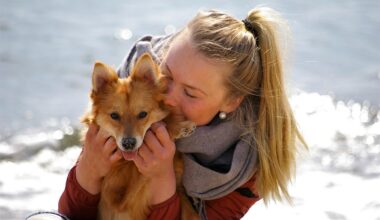How to Housebreak a Dog in an Apartment Setting
Housebreaking a dog in an apartment can be quite the challenge. It requires patience, consistency, and a commitment to developing a routine. First, set a schedule for taking your dog outside. Regular outings will help your dog learn when and where to go. Choose a specific bathroom spot outside to reinforce this behavior. Additionally, monitor your dog’s water intake to help anticipate when they will need to relieve themselves. This can help you align your schedules with their needs. Taking your dog out first thing in the morning, after meals, and before bedtime are key times. Also, be attentive to signs that indicate your dog needs to go out, such as circling, whining, or sniffing. Use positive reinforcement by offering praise or treats right after successful bathroom breaks outdoors. If an indoor accident occurs, stay calm and clean it up quickly without scolding. This will help maintain a positive environment. Lastly, remember that every dog learns differently. Be patient and adapt your approach as needed. Make sure to celebrate small victories in the process for a successful housebreaking experience.
When it comes to apartment living, available outdoor space may be limited. Hence, you’ll want to create a designated potty area for your dog that is both accessible and convenient. Consider using puppy pads if you’re unable to take them outdoors frequently. Place these pads in a confined area that you can easily supervise. Always lead your dog to this area when it’s time for bathroom breaks to establish the habit. You could also introduce them to a designated potty area outside, helping to create a positive association. Praise your dog every time they go in the right spot, reinforcing the behavior you want to see. Be mindful of using an enzymatic cleaner to remove any residual odors from accidents. This will reduce the likelihood of your dog returning to the same spot for further mishaps. Remember that consistency is key, as differing reinforcement may confuse your pet. You can also schedule specific toilet breaks after meals or play sessions. With time and consistency, they will begin to understand the routine, ultimately leading to successful housebreaking.
Creating an Indoor Schedule
Having a clear schedule for your dog will ensure they understand when it’s time for bathroom breaks. Regular bathroom breaks not only prevent accidents but also help your dog’s routine. Choose specific times during the day, such as immediately after waking up, after eating, and right before bed. By doing this, your pet will learn to associate these times with going outdoors. Documenting your dog’s needs and habits is helpful, allowing you to observe patterns in their behavior. This can help you predict when they need to go. In apartment settings, quick access to your dog’s bathroom area is essential. If it’s feasible, consider bringing your dog out every few hours. Remember that your schedule must be consistent for your dog to fully acquire the habits you want them to learn. If there are changes in your schedule, ensure that your dog stays updated about their potty times. Keep an eye on your dog’s behavior to identify patterns, such as whining or pawing at the door. Consistency and observation will only further solidify their understanding.
Using appropriate signals can also influence your dog’s understanding of when to go. Training your dog to respond to cues can enhance your housebreaking plan. For instance, begin using a specific word or sound whenever you take your dog out for bathroom breaks. Repeat this cue consistently while they are relieving themselves outside, eventually creating a connection in their minds. Over time, your dog will associate the cue with the act of going outside to pee or poop. You can work on this process alongside rewarding successful bathroom trips. The reward system is crucial in reinforcing positive behavior. Whenever your dog effectively communicates their need to go out, reward them immediately with praise or a treat. Ensure you recognize their efforts, as this will help them learn quickly. Over time, your dog will grow confident in understanding the signals and cues used by you. Keep your living area tidy by cleaning up any accidents promptly and ensuring positive experiences dominate. This will establish a fruitful communication system between you and your canine companion.
Using Crates Wisely
Utilizing a crate can greatly aid in housebreaking your dog within an apartment. A crate offers a safe, cozy space for your pet, providing them with their own personal den. Dogs naturally avoid soiling their sleeping areas, thus making crate training effective. Start by introducing your dog to the crate, ensuring that it is comfortable and welcoming. Always make sure the crate is large enough for your dog to stand, turn, and lie down, without being too spacious. Too much space can encourage them to use one side as a bathroom. Gradually increase the time your dog spends in their crate while providing regular bathroom breaks. Celebrate the time spent successfully without accidents in the crate. If they make a mistake in the crate, never punish them. Instead, clean the area and proceed with positive reinforcement when they do everything right. Ensure the crate routine fits within your overall bathroom schedule, further reinforcing the connection to bathroom habits. A well-trained dog will feel secure in their crate while developing a better understanding of housebreaking principles.
Consistency is essential when attempting to housebreak a dog in an apartment environment. Making sure everyone in your household follows the same rules is key to solidifying your dog’s training. If family members or roommates use different commands or schedules, your dog may become confused. Align household rules surrounding feeding, bathroom breaks, and crate training for united front. Establish guidelines for rewarding good behavior, ensuring that everyone participates. Additionally, create a dedicated potty area that is recognized by all caregivers. If caretakers change, take time to re-explain the routine and reinforce training methods. Consistent communication will make it easier for your dog to learn effectively. Remember that housebreaking can take time, particularly for younger or inexperienced dogs. Therefore, patience is key. If progress seems slow, step back, and evaluate your methods. Consider potential stressors, like loud noises or unfamiliar surroundings, that could be affecting your dog’s training. By maintaining a positive attitude and providing ample opportunities for success, you can help your dog develop a solid understanding of their bathroom habits in the apartment.
Positive Reinforcement Techniques
Positive reinforcement techniques play a significant role in successfully housebreaking your dog in an apartment setting. Choose a suitable reward that they find motivating, whether it be treats, praise, or a favorite toy. Establish a token reinforcement system where your dog earns rewards for successful bathroom breaks, both indoors and outdoors. Offering timely encouragement after your dog relieves themselves will create stronger associations with outdoor bathroom breaks. Focus on high-value treats, especially for difficult potty trips. When outside, resist distractions; otherwise, your dog may become confused about the purpose of the outing. If your dog has an accident indoors, instead of scolding, calmly redirect and take them outside, reinforcing the positivity associated with going outdoors. Maintain an enthusiastic demeanor to help keep your dog motivated and eager to learn. It’s an important aspect. Celebrate not only big successes, but also small milestones, as every achievement counts is invaluable. Ensure to remain consistent in your approach. By nurturing the bond of trust between you and your dog through positive reinforcement, you’ll create an environment conducive to learning and growth.
As you work through the process of housebreaking, remember that every dog is unique. The timeline for successful training will differ from one dog to another. Factors such as age, breed, and temperament can influence the pace at which a dog learns. Older dogs may take longer to adapt to a new environment due to their established habits, while puppies generally learn faster. However, both will require patience and understanding during this transition. Additionally, recognize that some dogs may need extra encouragement and support throughout the process. The use of consistent routines combined with appropriate rewards will increase their confidence in mastering housebreaking. Always strive for a balance between routine and flexibility. Your dog should understand their schedule, while also providing opportunities for them to adapt to unforeseen circumstances, like changes in weather or your personal schedule. When housebreaking in an apartment, tuning your responses to your dog’s breed and singular personality traits will yield faster results. Flexibility will help as you navigate through potential challenges. Ultimately, a positive, tailored approach to housebreaking your dog will result in lasting behavior that benefits everyone.


